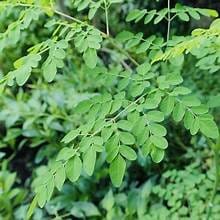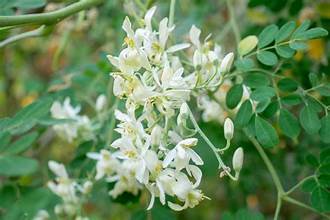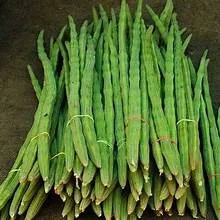Table of Contents
Moringa: The Miracle Tree the World is Waking Up To – and Wasting
In a world grappling with malnutrition, climate change, and food insecurity, nature has long offered solutions that go underappreciated or even ignored. One such gift is the Moringa oleifera, commonly known as the Moringa tree, drumstick tree, murinja, Sahajan, senjana or miracle tree. Native to parts of Africa and South Asia, this fast-growing, drought-resistant plant offers unparalleled nutritional and medicinal benefits—but remains shockingly underutilized in many countries.
🌿
A Treasure Chest of Nutrition
Every part of the Moringa tree is edible and beneficial:
1.
Pods (Drumsticks)
- Commonly used in Indian, Sri Lankan, and Filipino cuisine.
- Rich in vitamin C, potassium, dietary fiber, and essential amino acids.
- Help in improving digestion, controlling blood sugar, and reducing inflammation.
2.
Leaves

- Often called a superfood, gram-for-gram they contain:
- 2x the protein of yogurt
- 3x the potassium of bananas
- 4x the calcium of milk
- 7x the vitamin C of oranges
- Used in powder form for smoothies, teas, and supplements.
- Boosts immunity, combats malnutrition, and supports brain health.
3.
Flowers

- Edible when cooked or made into tea.
- Contain antioxidants, amino acids, and flavonoids.
- Known for anti-inflammatory and aphrodisiac properties in traditional medicine.
4.
Seeds & Seed Oil
- Crushed seeds purify water—used in many African communities.
- Moringa oil (ben oil) is rich in oleic acid, beneficial for heart health and skincare.
- The oil has anti-aging and moisturizing properties.
5.
Bark, Roots, and Gum
- Used in Ayurvedic and traditional medicine for anti-bacterial and anti-fungal applications.
- Require cautious use due to potential toxicity in high doses.
6.
Skin & Peels
- Generally discarded as waste but rich in fiber and antioxidant compounds.
- Potential use in composting or bio-fertilizers, and even for developing plant-based textiles or packaging.
🌍
Global Popularity – A Growing Trend
Widely Used In:
- India & Sri Lanka: An essential part of diets and traditional medicine.
- Philippines: Known as “malunggay,” widely used in soups and stews.
- Africa: Employed in anti-malnutrition campaigns and water purification.
- Latin America & Caribbean: Increasingly used for health supplementation.
Gaining Ground In:
- United States & Europe: Available in health food stores as powders, teas, and supplements.
- Japan & South Korea: Integrated into beauty products and wellness regimens.
⚠️
The Tragedy of Waste and Ignorance
Despite its proven benefits, Moringa remains neglected or discarded in many areas:
- Urban India sees Moringa leaves falling from trees and rotting on roadsides while nearby communities battle malnutrition.
- In parts of Africa, the bark, leaves, and seeds are underused despite severe food shortages.
- Western countries, while slowly adopting Moringa supplements, still import rather than grow or utilize local varieties.
Why the Waste?
- Lack of awareness: Even in regions where the plant grows abundantly, its health potential is unknown to many.
- Cultural stigmas: In some areas, Moringa is seen as a “poor man’s food.”
- Urbanization: Younger generations are losing touch with traditional knowledge.
- No structured market: Limited supply chains and demand discourages farming and proper harvesting.
🌱
A Call to Action
With the climate crisis and global hunger at the forefront, Moringa could be a game-changer:
- Schools and NGOs can incorporate Moringa meals in mid-day programs.
- Governments can promote it as a climate-resilient crop.
- Health and wellness sectors can popularize Moringa-based solutions.
- Tech platforms like FoodPulse can track, promote, and prevent Moringa waste in real time.
✅
Conclusion
The Moringa tree is not just another green plant—it is a potential lifesaver in the fight against malnutrition and disease. As its popularity slowly grows in health circles, it’s imperative to ensure that this miracle tree is not only celebrated but also protected from waste and ignorance.
The solution is simple: recognize, respect, and revive our relationship with Moringa—before more of it goes to waste, and with it, a world of wellness.








